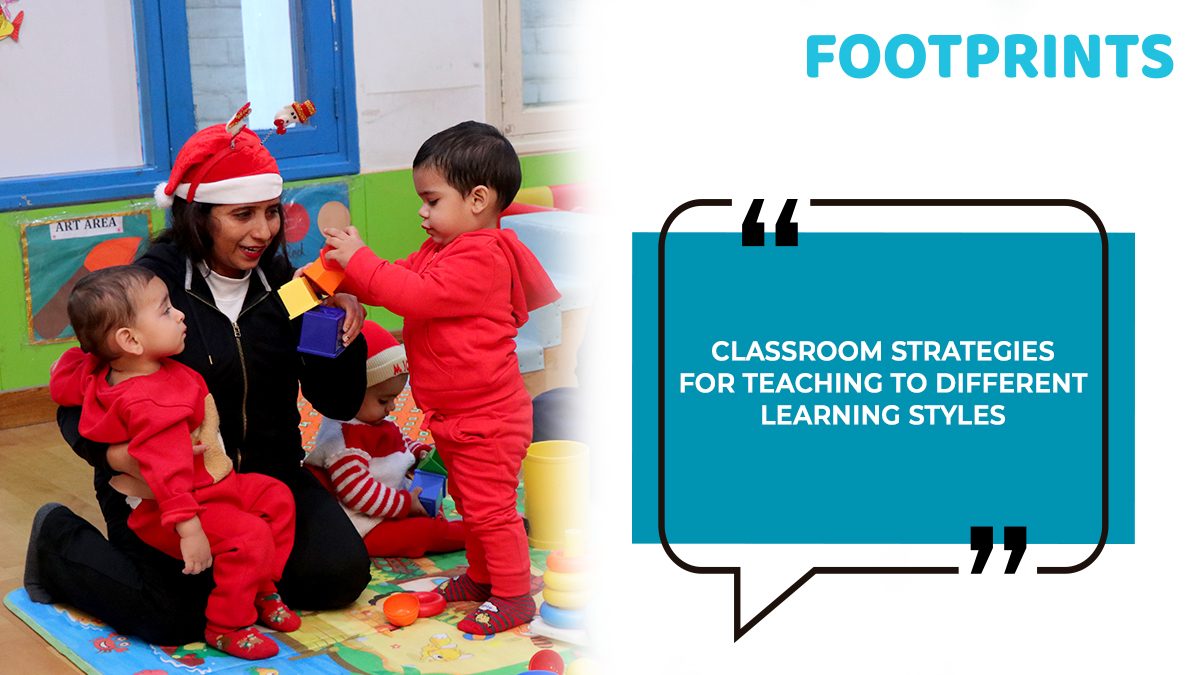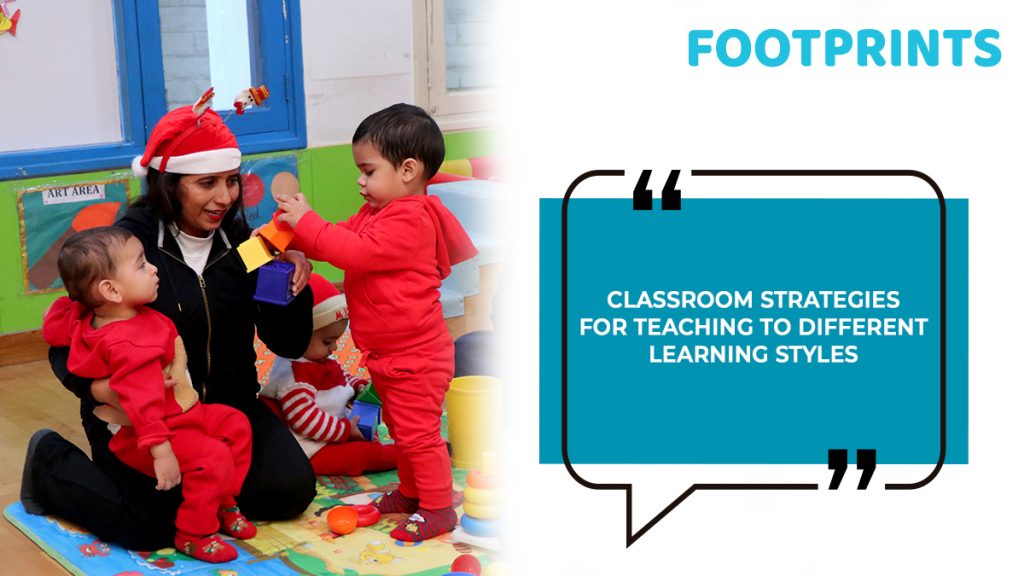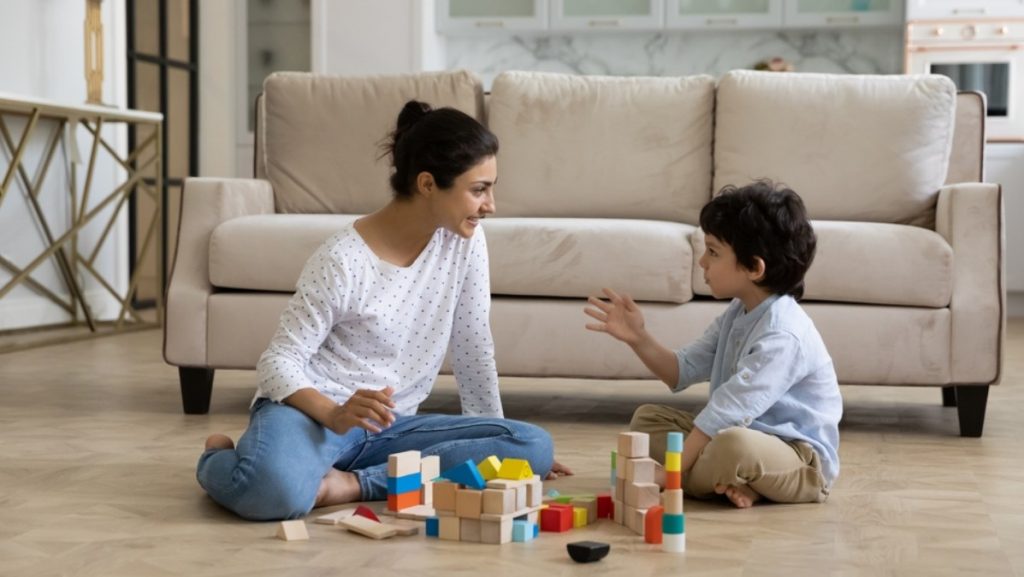

When it comes to learning, there clearly is no one-size-fits-all approach. In fact, it was in the mid-70s that the theory of different learning styles and hence classroom management strategies started to gain popularity. The theory rests on the understanding that each child has a different learning preference. Some learn best by seeing, others by hearing, some others by doing, and so on. This is not to say that a child may have only one learning style, however, they would have some learning preferences. It is imperative that teachers understand these learning styles & use them in their classrooms to be able to cater to different types of learners.
While there are several theories that speak about different learning styles, the one that is extremely popular was propounded by Neil Fleming.
What is VARK?
Popularly known as the VARK model, Fleming’s theory recognizes the fact that students learn in these four general ways, also known as styles or modalities:
Types of learning styles
- Visual
- Auditory
- Read/Write
- Kinesthetic
Essentially the VARK model refers to the four sensory modalities that describe different learning preferences.
Let us look at each of them in some detail:
Visual Learners
These are learners that learn best by seeing. Such learners tend to see information as well as visualize information to be able to able to learn better. They learn by observing.
Classroom Teaching Strategies:
The best teaching aids for such learners are charts, diagrams, videos, handouts, workbook pages heavy on illustrations, online programs with vibrant colours, and more. Importantly, you need to ensure that visual learners are given enough time to absorb the information. Allowing them to draw pictures, diagrams & more, also helps them to retain information.

Auditory Learners
Auditory or aural learners learn best by hearing information. They prefer the information being read out to them instead of reading it. They may even create songs to remember information. Typically sound & music also appeals to such learners.
Classroom teaching strategies:
Involving students in conversation, dialogue, discussion, asking follow-up questions, engaging videos, and audio recordings are all important aspects of engaging these learners. Setting questions & answers to rhythmic patterns also work and will help as classroom management strategies.

Reading and Writing Learners
Such learners prefer to read and write information to be able to grasp it. Some of the strategies that work well for such learners include reading a textbook, making notes, making lists & more.
Classroom Teaching Strategies:
Textbooks, articles, online search engines, and more are some tools that appeal to this set.

Kinesthetic Learners
These are tactile learners that learn best by touching & doing. What matters to them is hands-on experience. Physical activities, art, and craft, and sports play a big part in these students’ lives.
Classroom teaching strategies:
Role plays projects, learning games, clapping, hopping, or other movements, scavenger hunts, using tactile material such as clay and more that encourage learners to move and be hands-on are important tools.

Does each learner have only one learning modality?
A learning style in education is simply the most consistent way in which a student prefers to learn. Does it mean that each learner has only one learning style and that the student will not learn anything whatsoever if that learning modality isn’t followed? Not quite. While some students have one dominant style, research however shows that for most learners, multi-modality works best. The essential bit then is to discover all the different ways in which students can learn and therefore to include that in the teaching methodology.
How should teachers use learning styles in the classroom?
A big takeaway for teachers is that the pedagogy needs to include activities that cater to all learning types. For instance, if students need to be told about volcanoes, it is prudent to show pictures, videos, and diagrams, do some tactile activities around them, and more. That way different children will find the learning option that works best for them. Or if the teacher is teaching math, they could use flashcards, watch a video, or even play a game around the concept that is being taught. The key to learning is to engage different senses so that children can benefit from it.
To be able to do this, teachers need to take the time to understand their students & their learning styles in order to create engaging lessons. Being creative and creating unique experiences can go a long way in engaging young students. Importantly, irrespective of their learning style, children need to be allowed to work at their own pace for them to grasp the information.
Another aspect to remember is that besides the above learning styles, learners could also be social or solitary. That simply means that some learners prefer to work alone being independent & self-aware, while others work well in groups, interacting with each other. Utilizing both learning styles and providing enough opportunities where students can choose what works for them, is therefore imperative.
To Sum Up
Like the VARK model, there are several other models that stress different working styles. The important thing to remember is that every student’s learning style is a function of various factors, some genetic & others learned. While each of these theories gives the teacher important frameworks, it is really an aware & passionate teacher who can devise the best classroom management strategies that work for their students. Importantly teachers can enhance the self-esteem of students as well as foster a positive attitude towards the act of learning itself. At Footprints Play School, we cater to different learning modalities to ensure that we cater to different types of learners. Our programs are engineered to help children explore & celebrate their learning abilities. What we, therefore, pride ourselves on is creating curious learners who remain learners for life.
Aditya brings over ten years of expertise as a Senior Marketing Strategist. He’s an expert at developing captivating marketing tactics that regularly provide excellent outcomes. His innovative strategies have demonstrated a track record of increasing organizational reach and engagement, showcasing his extensive knowledge of the contemporary marketing landscape.

